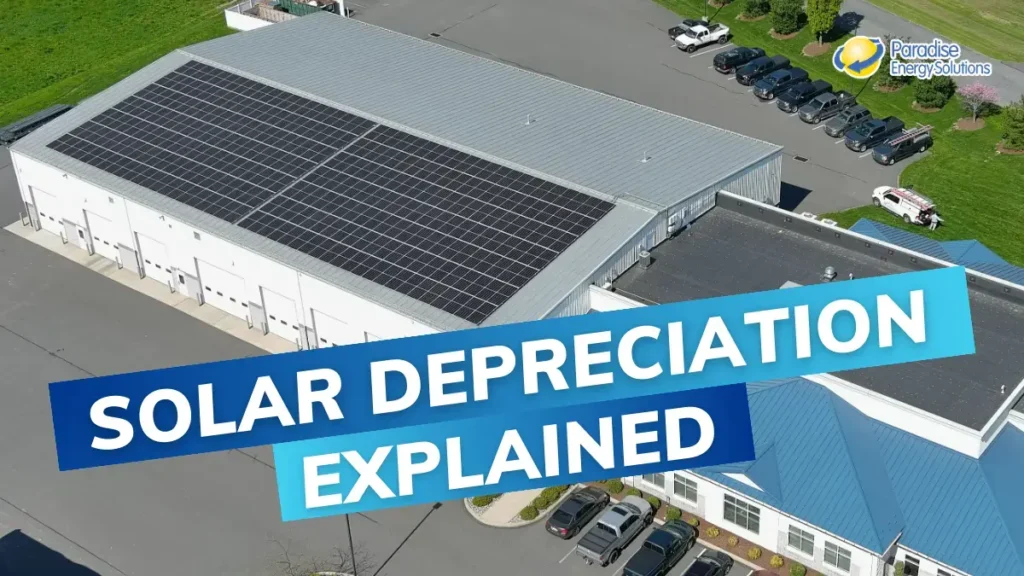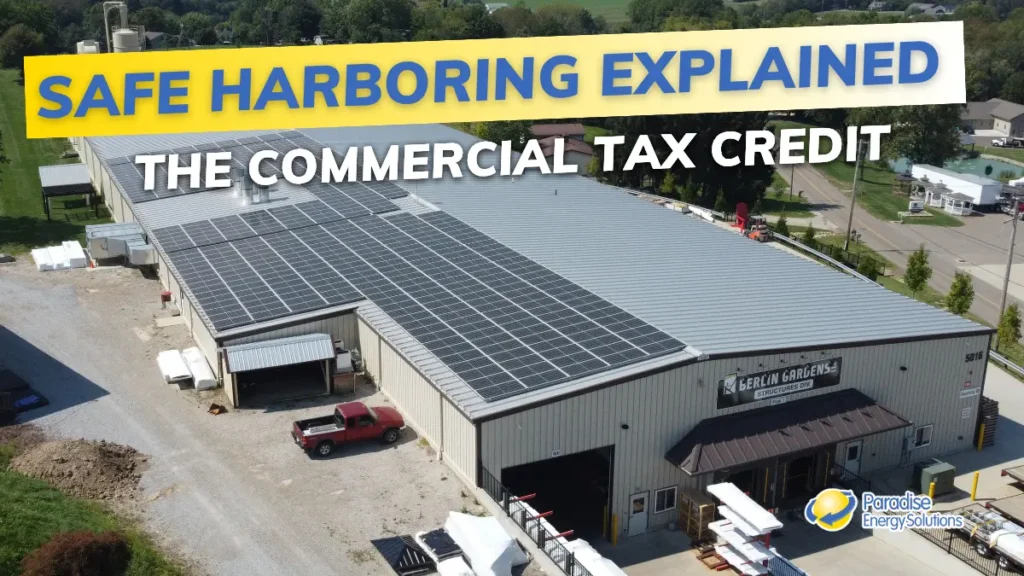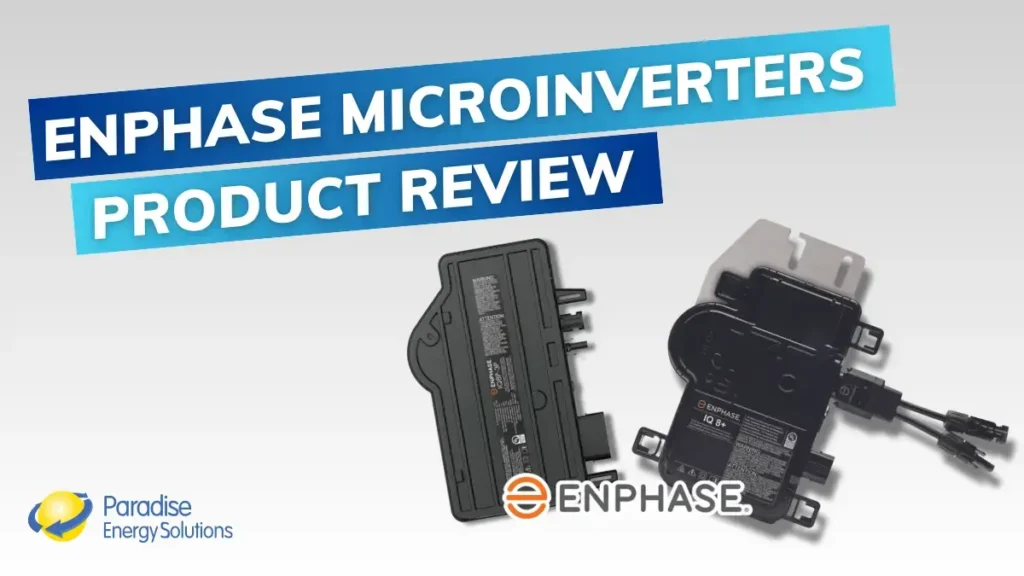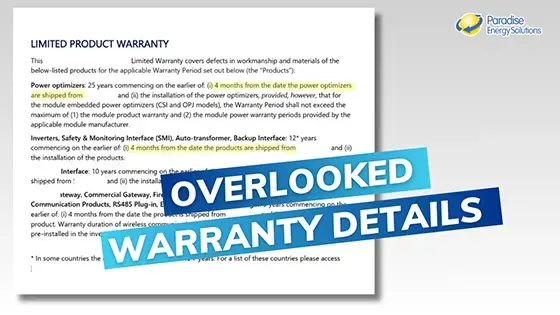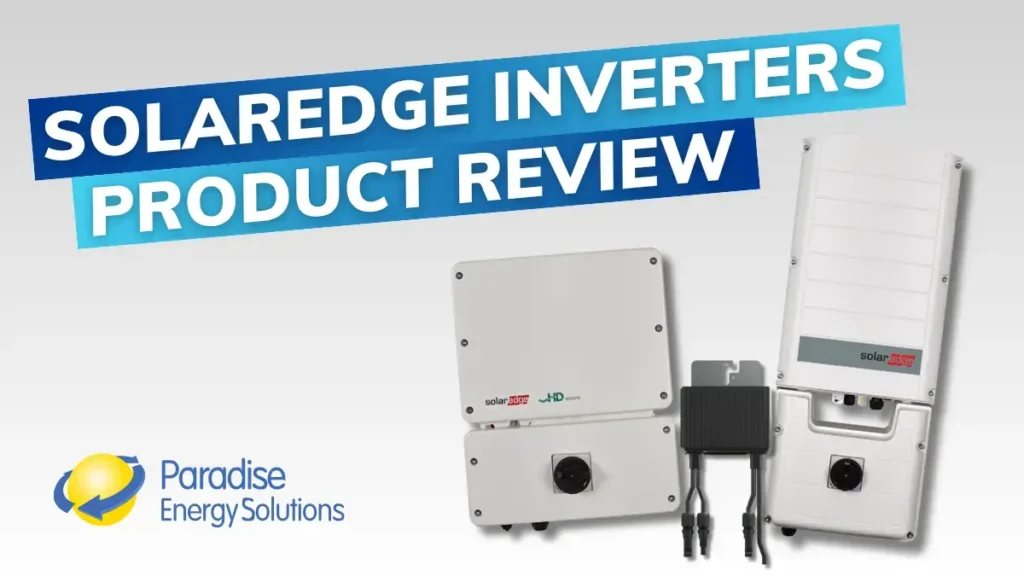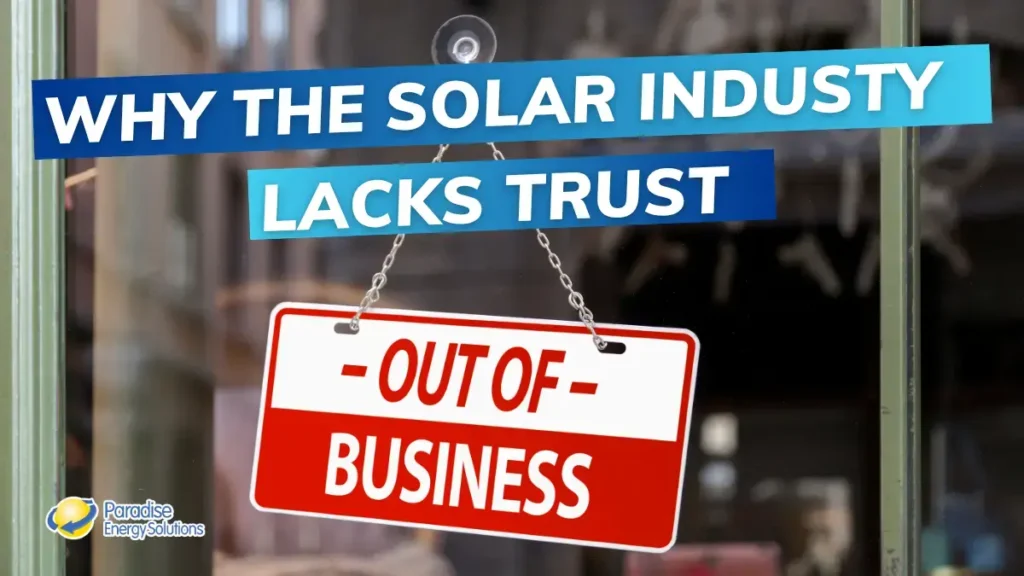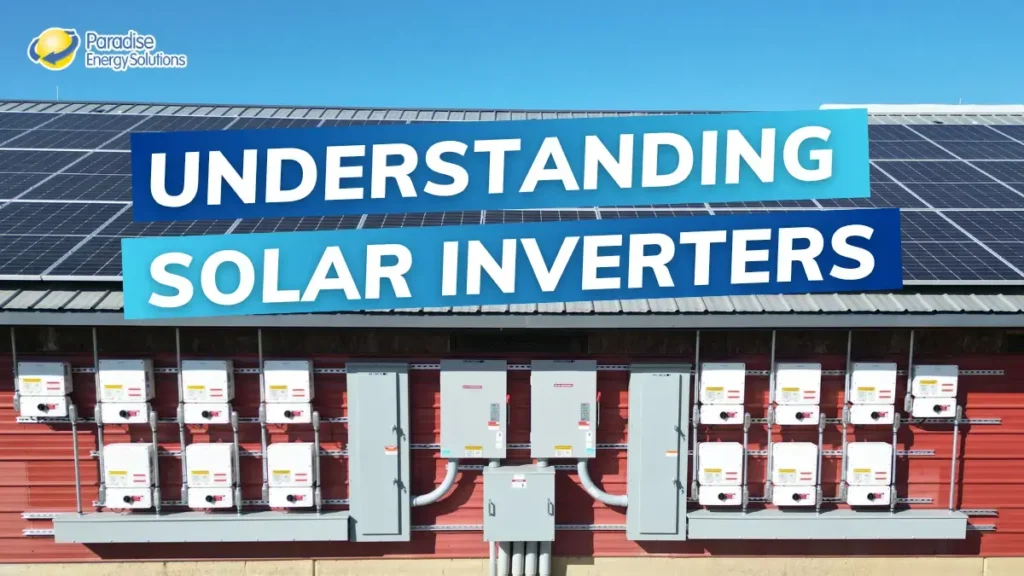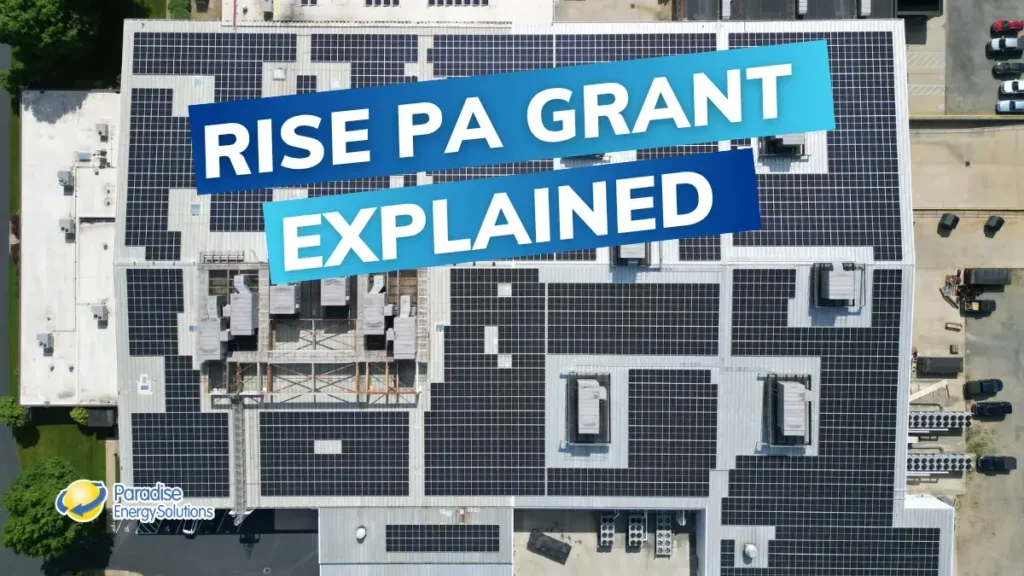Depreciation is a great benefit for commercial solar panel installations. It’s one of the easiest ways businesses and farms can keep installation costs down, ROIs high, and paybacks short.
Put simply, depreciation is a decline in an asset’s value over time. Your business can use this to recover costs from purchases as the equipment’s value degrades throughout its lifetime.
There are several different ways to expense depreciation, but we’ll focus on depreciating your solar system using the Modified Accelerated Cost Recovery System, or MACRS depreciation, with a portion of the federal benefits accelerated to year one.
At Paradise Energy, we are expert solar installation professionals, not accountants. We give the most accurate outlook we can based on the financial information provided to us by our customers, but before making any decisions on how to expense depreciation, we recommend checking with your accountant first.
A word to homeowners looking to go solar: depreciation is not generally allowed on residences unless it is considered a business expense.
Accelerated Bonus Depreciation for Commercial Solar Installations
What is the Depreciation Rate for a Commercial Solar System?
As a business leader, you understand the importance of making strategic investments that yield both financial returns and environmental benefits. The type of investment you choose plays a significant role in determining the recovery period of your investment.
A commercial solar investment has the benefit of offering 40% bonus depreciation in year one on the federal level. The remaining balance will follow the five-year MACRS (Modified Accelerated Cost Recovery System) schedule. On the state level, the depreciation will follow the standard five-year MACRS schedule.
Compared to many other business investments, solar energy provides a great tool for businesses to offset a significant portion of their tax liability in a relatively short period while also controlling a fixed cost.
Is Solar Depreciation Calculated Before or After the Federal Solar Tax Credit (ITC)?
Because everything has a wonderful way of being simple and easy, the answer to this question is going to be either before or after, right? Not so much. The IRS reduces the basis for depreciation by one-half of the tax credit amount allowed. So, since the tax credit is 30%, the depreciable basis would be 85% of the total cost (100% – [30% X .5]). For example, if your solar system costs $100,000, you could depreciate $85,000 of the system cost.
Note: For property acquired after September 27, 2017, and before January 1, 2023, the law allowed taxpayers to take a deduction amounting to 100%. That dropped to 80% in 2023 and will continue to decrease by 20% each year until it reaches 0% in 2027.
Does the Production Tax Credit Impact Your Depreciable Basis?
The Production Tax Credit (PTC) is an alternative to the 30% Solar Investment Tax Credit (ITC). Instead of a lump sum 30% tax credit, the PTC pays a set amount per kWh over a ten-year span. Using the PTC typically makes the most sense for utility-scale solar systems.
Unlike the ITC, claiming the Production Tax Credit does not reduce your depreciable basis.
Federal Depreciation vs State Depreciation For Commercial Solar
The Tax Cut and Jobs Act changed how we can depreciate solar on the federal level. Before 2023, businesses could depreciate 100% of the cost basis in the first year. Since then, the accelerated depreciation base has decreased by 20% annually, leaving it at 40% in 2025. This will continue to decrease by 20% annually until it reaches 0% in 2027.
Businesses can still depreciate 100% of the cost basis, but the remaining 60% will follow the five-year MACRS schedule.
An Example of How Commercial Solar Depreciation Works
Let’s figure out the MACRS depreciation for a solar panel system that costs $300,000 before incentives. You’ll be able to take advantage of the Federal Solar Incentive Tax Credit at 30%. But since we have to calculate depreciation with half of the tax credit, reducing the depreciable cost basis, we’ll have to take 15% off the cost of the system to get the basis of depreciation. We can do this by multiplying the cost by 85%, which gives us $255,000.
Next, you’ll need to know your federal and state tax brackets. For this example, we’ll use a 24% federal tax rate and a 7% state tax.
To calculate federal tax savings from depreciation, multiply the $255,000 by 24%. Because you can take advantage of 40% of this in the first year, you’ll enjoy $24,480 in savings that will offset your tax liability the year that your solar system is placed into service. The remaining $36,720 of the depreciable amount will follow the MACRS schedule.
To get state savings, multiply $255,000 by your state tax rate, which, in this case, is 7%. You’ll get $17,850 spread over the 5-year MACRS schedule.
That means the total savings from just depreciation would be $79,050. In this example, that’s 26.3% of the entire solar system’s cost!
| Recovery Year | Federal Depreciation | State Depreciation | Total Savings |
| Year 1 | $31,824 | $3,570 | $35,394 |
| Year 2 | $11,750 | $5,712 | $17,462 |
| Year 3 | $7,050 | $3,427 | $10,477 |
| Year 4 | $4,230 | $2,056 | $6,286 |
| Year 5 | $4,230 | $2,056 | $6,286 |
| Year 6 | $2,115 | $1,028 | $3,143 |
These tax savings will keep your payback period short and your ROI high. You’ll be able to use these savings to reduce a loan’s principal owed or reinvest in your company.
Are you ready to see how much you could save with solar? Use our Solar Savings Calculator to get an instant price and savings estimate.
